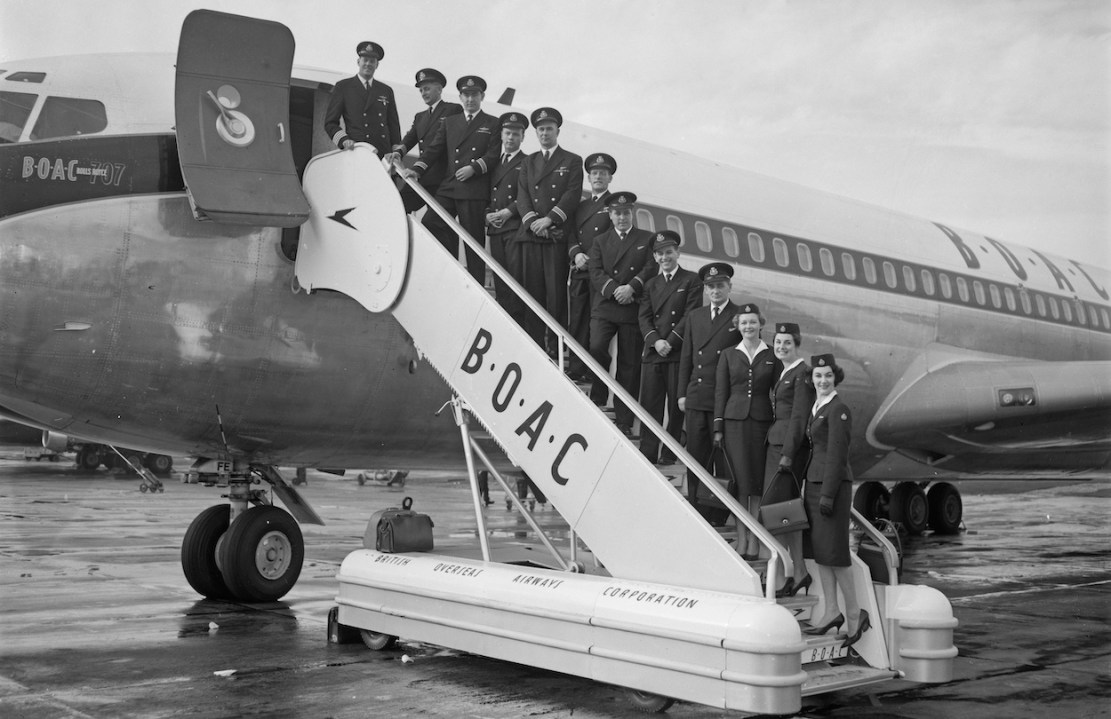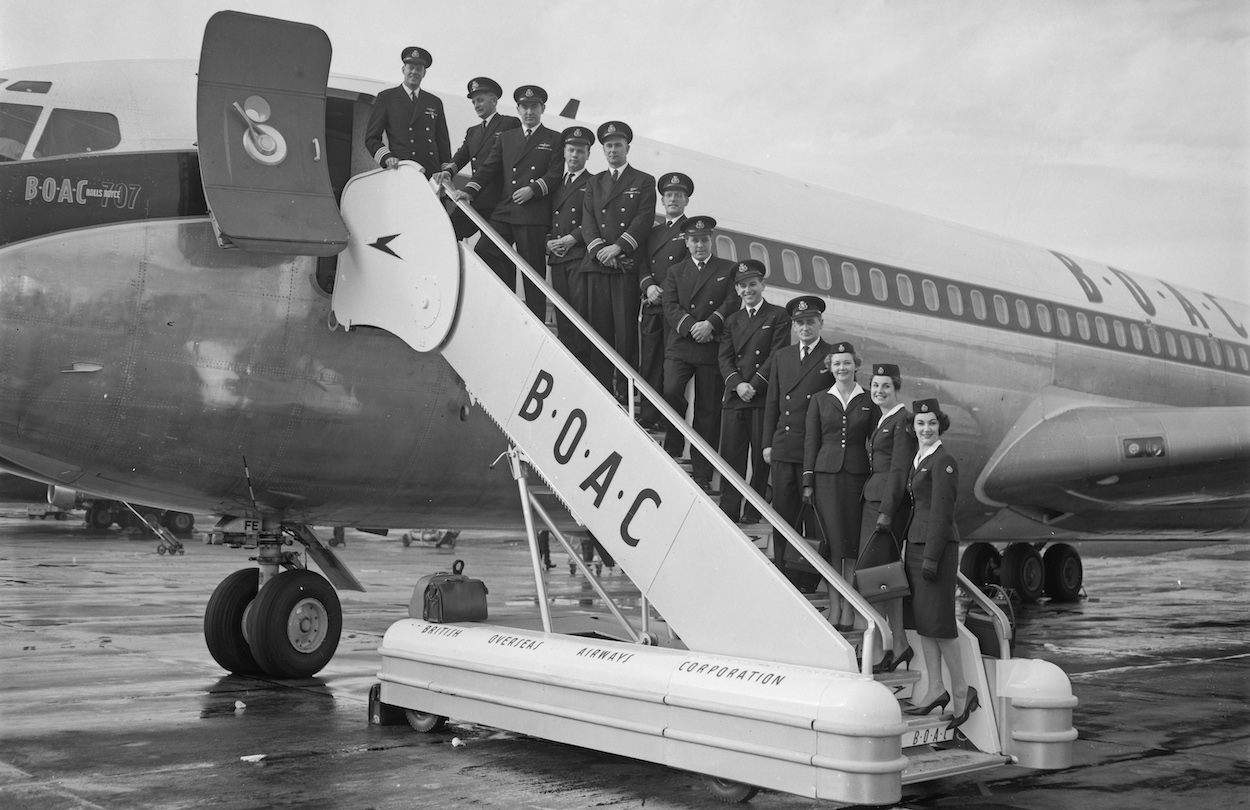As we celebrate 120 years of aviation with a plug door and several iPhones tumbling from an in-flight spanking-new Boeing 737 Max, and a new Airbus A350 burning to a cinder in Tokyo, it is fair to note that not a single passenger was killed in either incident (although four Japanese coast guards perished on the ground). When I started flying it was glamourous, exciting and genuinely dangerous.
An actual pilot. Some kind of God. I stood there hypnotised by the illuminated dials and the throbbing turboprops
Not so long ago in the annals of human civilisation, on 13 December, 1903, in Kitty Hawk, North Carolina, Orville Wright, a bicycle mechanic from Dayton, Ohio, piloted the Wright Flyer he’d built with his brother Wilbur. The first sustained, controlled, powered flight lasted 12 seconds and covered a distance of 120 feet.
My own sky baptism was 56 years later. As a very small boy, I flew from Chicago to London on a BOAC Bristol Britannia, the ‘Whispering Giant,’ a largely forgotten turboprop airliner that was quickly superseded by the game-changing jet the Boeing 707. On this flight I earned my wings in the BOAC Junior Jet Club. My membership came with a badge and a log book in which all my flights would be recorded by the captain.
I have flown around 1,000 times subsequently and the excitement has mostly worn off. There have been some thrilling flights. Kukes to Tirana in a French army helicopter. The Concorde to Kourou (the plane broke down in Dakar, Senegal). But flying is rarely thrilling anymore. It’s tiresome, above all, even in business class.
Yet nothing matches the memory of the first slipping of Earth’s surly bonds, in the dawn of the jet age, as civil aviation boomed and there was nothing more glamorous than getting on an airplane. Flying then was hyper-special. And somewhat daring. Women wore hats; men, suits and ties. The seats were bigger and wore antimacassars. The flight attendants were worldly and called stewardesses. Many were trained nurses, lest passengers have attacks of vapours.

It was not merely theoretical that flying wasn’t entirely safe. There were 500 deaths a year from civil aviation accidents in the 1950s. It’s fewer than 50 today. I hadn’t been told and found out later that my uncle had been killed two years earlier, in 1957, en route to Lisbon on his honeymoon in a Short Solent flying boat which crashed into a chalk quarry on the Isle of Wight minutes after taking off from Southampton Water.
The exact date of my flight to Heathrow I don’t know as my Junior Jet Club logbook has long been gone but it would have been in around May 1959. My mother, sister and I embarked at Orchard Field Airport, the main Chicago airport (subsequently O’Hare), for the 14 hour flight to Heathrow. I retain few details of this adventure, but one is outstanding.
Back then, before the horrors of 9/11, it was still possible for excited children to be invited to the cockpit and after we had lumbered into the air, I was duly invited forward so the captain could sign my logbook.
Perhaps you will say this is my imagination but I swear it is my clear recollection of being ushered into a cockpit and being introduced to the captain who had a handlebar moustache straight out of Biggles. He was certainly the most formidable male human being I had ever encountered. An actual pilot. Some kind of God. As I stood there hypnotised by the illuminated dials and the throbbing turboprops, the captain turned to the stewardess who had brought me forward and demanded, ‘a whiskey and soda please, love,’ which a moment later she brought to him in a cut-glass tumbler on a silver tray.
And so we pushed onward to the east and to landing at Heathrow which was a dump in a shed, so hasn’t changed at all. That was both my first and most memorable flight, when I witnessed the end of one era of aviation, on the way to another. These days, you’ll find me in 5D on Ryanair.
As a post script, I add only that the abandonment of the Junior Jet Club is the cardinal sin of what is now British Airways, which is everybody’s airline of last resort (see here for more on the decline and fall of BA). British Airways cannot be restored without it.







Comments